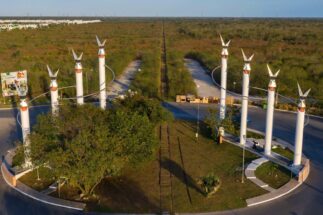Nearly 76 million metric tonnes (MMT) of palm oil were produced globally in the 2019/20 crop year. This was only marginally up from 2018/19, bucking the long-term trend of exponential growth, largely due to labour shortages and supply chain disruption from Covid-19.
Today, palm oil is the world’s most widely used vegetable oil, found in thousands of products from toothpaste to pastry, pharmaceuticals, paint, instant noodles and anti-freeze. Its popularity is underpinned by its incredibly high yield: on average one hectare of oil palm plantation produces around 3.3 metric tonnes (MT) per year – a much higher return than other oil crops such as coconut, soy or sunflower.
But its exponential growth in production has come at huge cost. UN figures show that unsustainable agricultural expansion, especially in tropical and subtropical regions, has been responsible for 80% of the 420 million hectares of forest loss recorded since 1990.
When forests are cleared – using fire, logging or any other means, CO2 is released into the atmosphere. If forests with underlying peat soils are disturbed, as has been the case in Indonesia and Malaysia, where much of the world’s palm oil is grown, even more CO2 is released, exacerbating the climate crisis.
Palm oil is not exclusively driving deforestation. But its expansion has contributed significantly to ongoing forest loss in some of the world’s most important biodiversity hotspots. This has not only threatened a diverse array of species, but has undermined the ability of tropical forests to provide ecosystem services for people.
So what does 76 MMT of palm oil actually look like? Let’s take a look.
Comparison with megastructures is just one way to visualise it – let’s try another. If you were able to pour this volume of oil over an area of land, it would be enough to cover the Sahara desert. How’s that for scale?
The period of growth for the global palm oil industry is not over and concerns over palm oil’s sustainability will influence future market opportunities. Some importers of the commodity are introducing increasingly stringent policies, for example EU law requires that all packaged foods containing palm oil clearly label it as an ingredient. And consumers are becoming more conscious of the social and environmental issues surrounding palm oil practices too, with a recent study finding that 77% of UK consumers were aware of palm oil, and 41% of those aware perceived it as “environmentally unfriendly”.
In 2004, the Roundtable on Sustainable Palm Oil (RSPO) was established to support and promote the production of sustainable palm oil. It now numbers more than 4,300 member groups worldwide. The RSPO sets out industry best practices for producing and sourcing sustainable palm oil, with particular attention given to respecting the rights of local people and workers, supporting smallholder farmers, protecting and enhancing biodiversity and ecosystem services in plantations, and improving transparency across the supply chain.
According to the RSPO, 15.2 MMT of certified sustainable palm oil were produced in 2019 – around 20% of production that year. What about the remaining 80%? Widespread uptake of sustainable practices is certainly not beyond the means of the industry, which could be worth US$92.8 billion by 2021. The industry is taking steps in the right direction with companies developing their own “No Deforestation, No Peat, No Exploitation” (NDPE) policies, but it still has a long way to go. Engaging stakeholders in developing markets such as India and China will be critical. In fact, the impact of demand from these countries could entirely underpin further market opportunities for sustainable development of the palm oil industry as well as improving the socio-economic and environmental outlook of this globally significant commodity.









